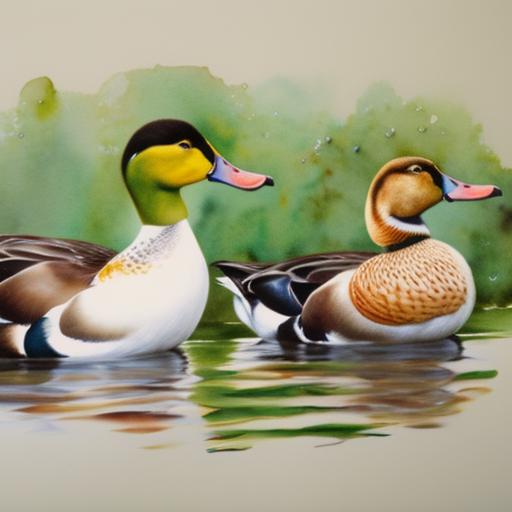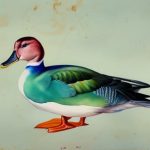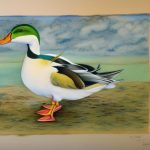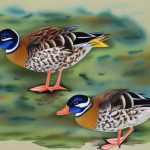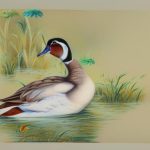Irish duck breeds are a group of domestic duck breeds that have originated in Ireland. These ducks are known for their hardiness, adaptability, and excellent foraging abilities. They are popular among farmers and homesteaders for their ability to thrive in various environmental conditions and their high-quality meat and eggs. Irish duck breeds come in a variety of colors and patterns, making them not only practical but also aesthetically pleasing additions to any farm or backyard. These ducks are also known for their calm and friendly temperament, making them great additions to a family farm or homestead. Whether you are looking for a reliable source of meat and eggs or simply enjoy the company of ducks, Irish duck breeds are an excellent choice for any poultry enthusiast.
Key Takeaways
- Irish duck breeds have a rich history and are known for their unique characteristics and physical appearance.
- The history and origin of Irish duck breeds can be traced back to ancient times, with evidence of their existence in Irish folklore and literature.
- Irish duck breeds are known for their distinct physical features, such as their colorful plumage and sturdy build.
- Some popular Irish duck breeds include the Irish Runner, the Orpington, and the Khaki Campbell.
- Irish duck breeds are used for various purposes, including egg production, meat, and as ornamental birds, and they require proper care and maintenance to thrive.
History and Origin of Irish Duck Breeds
The history of Irish duck breeds dates back centuries, with ducks being an integral part of Irish agriculture and homesteading. The exact origins of these duck breeds are not well-documented, but it is believed that they have been bred and raised in Ireland for hundreds of years. Ducks have long been valued in Ireland for their ability to provide meat, eggs, and down, as well as their pest control abilities in agricultural settings. Over time, various duck breeds have been developed and refined in Ireland to meet the specific needs of local farmers and homesteaders. These breeds have been selected for their ability to thrive in the Irish climate and landscape, making them well-suited for the unique challenges of farming in Ireland. Today, Irish duck breeds continue to be valued for their hardiness, adaptability, and productivity, making them an important part of Ireland’s agricultural heritage.
Characteristics and Physical Appearance of Irish Duck Breeds
Irish duck breeds are known for their diverse range of colors and patterns, making them visually striking additions to any farm or homestead. They come in a variety of colors, including white, black, brown, and various combinations of these colors. Some popular Irish duck breeds include the Khaki Campbell, the Silver Appleyard, and the Irish Runner. These ducks are medium-sized with sturdy bodies, making them well-suited for foraging and free-ranging. They have strong legs and feet, allowing them to navigate various types of terrain with ease. Irish duck breeds also have distinctive bills that are well-adapted for foraging and feeding on a variety of foods. Their plumage is often dense and water-resistant, making them well-suited for life on the farm or in wetland environments. Overall, Irish duck breeds are known for their hardy constitution, practicality, and attractive appearance.
Irish duck breeds are also known for their calm and friendly temperament, making them easy to handle and care for. They are generally docile and sociable, making them great additions to a family farm or homestead. These ducks are also known for their excellent foraging abilities, making them well-suited for free-ranging and pasture-based systems. They are efficient at finding their own food and can help control pests in agricultural settings. Irish duck breeds are also known for their high-quality meat and eggs, making them valuable additions to any farm or homestead. Their eggs are typically large and richly flavored, while their meat is prized for its tenderness and flavor. Overall, Irish duck breeds are valued for their practicality, productivity, and friendly disposition.
Popular Irish Duck Breeds
There are several popular Irish duck breeds that are well-known for their unique characteristics and qualities. One of the most popular Irish duck breeds is the Khaki Campbell, which is prized for its excellent egg-laying abilities. These ducks are prolific layers, often producing over 300 eggs per year. The Khaki Campbell is a medium-sized duck with a khaki-colored plumage, making it a visually appealing addition to any farm or homestead. Another popular Irish duck breed is the Silver Appleyard, which is known for its striking silver and white plumage. These ducks are valued for their dual-purpose qualities, providing both high-quality meat and eggs. The Silver Appleyard is a medium to large-sized duck with a calm and friendly temperament, making it a popular choice for small-scale poultry enthusiasts.
The Irish Runner is another popular Irish duck breed known for its unique upright posture and excellent foraging abilities. These ducks have a distinctive appearance with an upright stance and slender build. They are excellent foragers and are well-suited for free-ranging systems. The Irish Runner is also valued for its high egg production, making it a practical choice for those looking to raise ducks for eggs. Overall, these popular Irish duck breeds are valued for their unique qualities, productivity, and practicality on the farm.
Uses and Purposes of Irish Duck Breeds
Irish duck breeds serve a variety of purposes on the farm or homestead, making them valuable additions to any poultry flock. One of the primary uses of Irish duck breeds is for meat production. These ducks are valued for their high-quality meat, which is prized for its tenderness and flavor. Duck meat is a popular choice in many cuisines around the world and is known for its rich flavor and versatility in cooking. Irish duck breeds provide a reliable source of meat for farmers and homesteaders looking to raise their own food.
Another important use of Irish duck breeds is for egg production. These ducks are prolific layers, often producing large eggs with richly flavored yolks. Duck eggs are valued for their nutritional content and culinary uses, making them a popular choice among home cooks and bakers. Duck eggs are often used in baking due to their rich flavor and high protein content. They are also valued for their larger size compared to chicken eggs, making them a practical choice for those looking to raise ducks for eggs.
In addition to meat and egg production, Irish duck breeds also serve as valuable pest controllers on the farm. Ducks are known for their ability to control pests such as slugs, snails, and insects in agricultural settings. Their efficient foraging abilities make them well-suited for pest control in gardens, orchards, and other agricultural areas. By allowing ducks to free-range in these areas, farmers can reduce the need for chemical pesticides while promoting a more sustainable and natural approach to pest management.
Care and Maintenance of Irish Duck Breeds
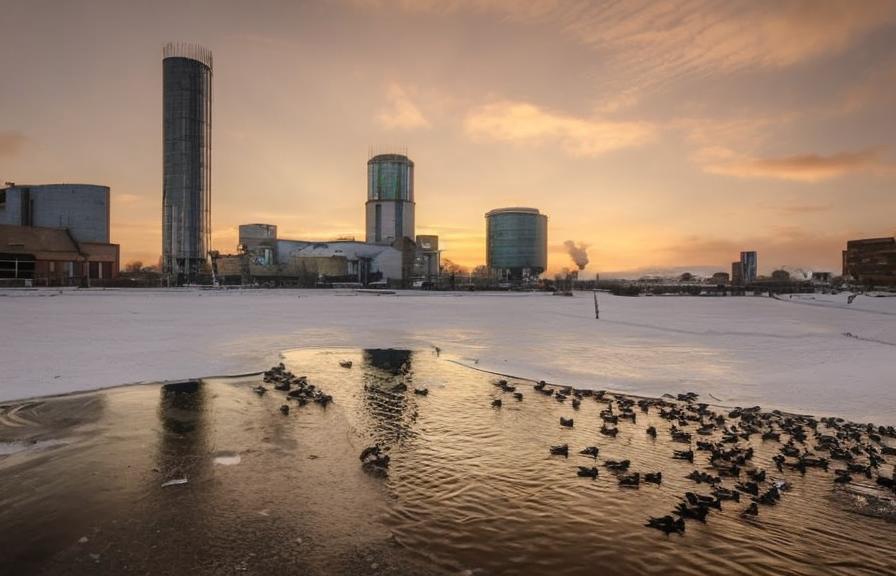
Proper care and maintenance are essential for ensuring the health and well-being of Irish duck breeds. These ducks require access to clean water for drinking and bathing, as well as a balanced diet that includes a mix of commercial feed and natural forage. Ducks should have access to a secure shelter at night to protect them from predators and the elements. Their living area should be kept clean and well-maintained to prevent disease and parasites.
Regular health checks are important to monitor the overall condition of the ducks and address any potential issues promptly. This includes checking for signs of illness or injury, as well as maintaining proper hygiene in their living environment. Providing regular access to fresh water is essential for ducks to maintain good health and hygiene.
Ducks also require regular grooming to keep their feathers clean and healthy. This includes regular bathing opportunities to keep their plumage clean and water-resistant. Additionally, providing opportunities for natural foraging can help keep ducks mentally stimulated and physically active.
Conservation and Preservation Efforts for Irish Duck Breeds
Conservation efforts play an important role in preserving the genetic diversity of Irish duck breeds. As with many traditional livestock breeds, Irish duck breeds face the risk of declining populations due to changes in agricultural practices and the increasing dominance of commercial hybrid breeds. Conservation efforts aim to preserve these unique duck breeds by promoting awareness of their value and encouraging responsible breeding practices.
One important aspect of conservation efforts is maintaining genetic diversity within Irish duck breeds. This involves identifying and preserving rare or endangered bloodlines to ensure that valuable genetic traits are not lost over time. By maintaining diverse genetic lines within these breeds, conservation efforts can help ensure the long-term viability of Irish duck breeds.
Conservation efforts also involve promoting the use of Irish duck breeds in sustainable agriculture and small-scale farming systems. By highlighting the practicality and productivity of these ducks, conservation efforts can help increase demand for these traditional breeds among farmers and homesteaders.
Overall, conservation efforts play a crucial role in preserving the unique qualities and genetic diversity of Irish duck breeds for future generations. By promoting responsible breeding practices and raising awareness of the value of these traditional breeds, conservation efforts can help ensure that Irish duck breeds continue to thrive in agricultural landscapes around the world.
Conservation efforts also contribute to the maintenance of healthy ecosystems, as Irish duck breeds play a role in natural pest control and wetland conservation. Additionally, preserving these breeds can also have cultural and historical significance, as they are a part of Ireland’s agricultural heritage. By supporting conservation efforts, individuals and organizations can contribute to the protection of Irish duck breeds and the sustainable management of agricultural resources. Ultimately, these efforts can help to maintain the resilience and adaptability of Irish duck breeds in the face of environmental challenges and changes in agricultural practices.
If you’re interested in learning more about Irish duck breeds, you might also want to check out this informative article on how to care for goslings. The article provides valuable insights into the breeding and care of geese, which can be helpful for anyone looking to expand their knowledge of poultry farming. You can read the full article here.
FAQs
What are the different Irish duck breeds?
There are several Irish duck breeds, including the Irish Runner, the Orpington, the Khaki Campbell, and the Silver Appleyard.
What are the characteristics of Irish duck breeds?
Irish duck breeds are known for their hardiness, good egg-laying abilities, and calm temperament. They come in a variety of colors and patterns, and are well-suited to both backyard and commercial duck farming.
What is the purpose of raising Irish duck breeds?
Irish duck breeds are raised for various purposes, including meat production, egg production, and as pets. They are also popular for their ability to forage and control pests in agricultural settings.
What are the ideal living conditions for Irish duck breeds?
Irish duck breeds thrive in a clean and spacious environment with access to water for swimming and foraging. They also require protection from predators and extreme weather conditions.
What should be considered when raising Irish duck breeds?
When raising Irish duck breeds, it is important to provide them with a balanced diet, regular access to clean water, and proper veterinary care. Additionally, providing them with adequate space and shelter is essential for their well-being.
Meet Walter, the feathered-friend fanatic of Florida! Nestled in the sunshine state, Walter struts through life with his feathered companions, clucking his way to happiness. With a coop that’s fancier than a five-star hotel, he’s the Don Juan of the chicken world. When he’s not teaching his hens to do the cha-cha, you’ll find him in a heated debate with his prized rooster, Sir Clucks-a-Lot. Walter’s poultry passion is no yolk; he’s the sunny-side-up guy you never knew you needed in your flock of friends!

